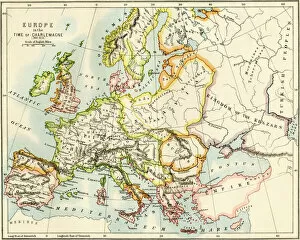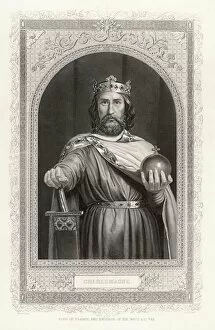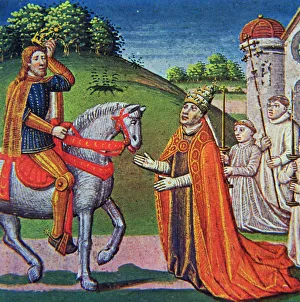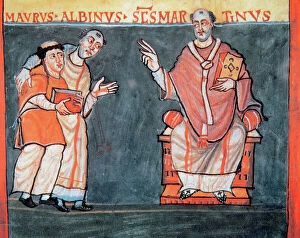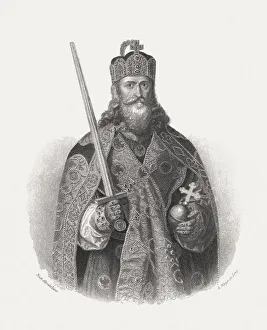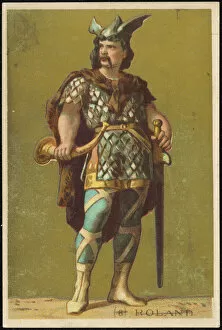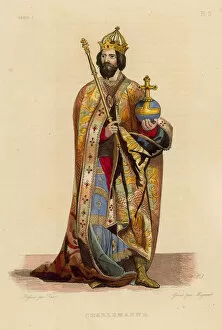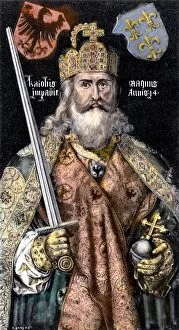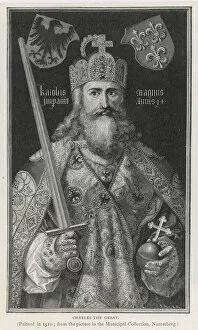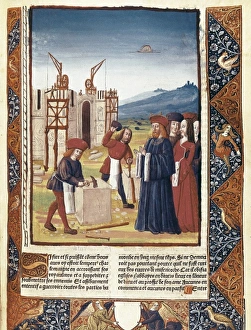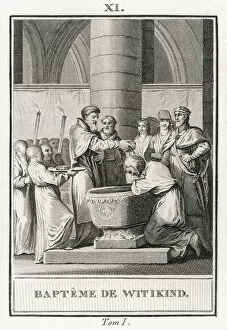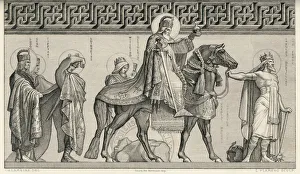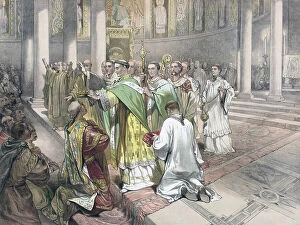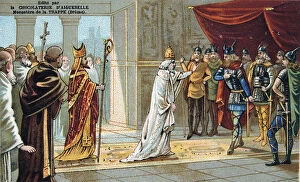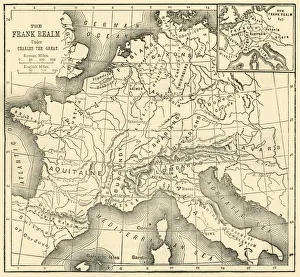Charlemagne Collection
Charlemagne, the legendary King and Emperor of the Franks, is a figure deeply rooted in European history
All Professionally Made to Order for Quick Shipping
Charlemagne, the legendary King and Emperor of the Franks, is a figure deeply rooted in European history. Dating back to around 1350 in Aachen, Germany, his influence spread far and wide across the continent. In this captivating image captured in an incunabula Chronicles miniature, we witness a momentous meeting between Charlemagne and Pope Adrian I. Known for his intellectual pursuits as well as military conquests, Charlemagne surrounded himself with brilliant minds like Alcuin of York. In another intriguing scene depicted here, Alcuin presents his knowledge to Rabanus Maurus, showcasing the importance of education during Charlemagne's reign. Roland, one of Charlemagne's most loyal knights immortalized in literature such as "The Song of Roland, " also makes an appearance. His presence serves as a reminder of the chivalry and valor that characterized this remarkable era. This wood engraving from the 19th century captures Charlemagne's regal essence based on a painting by Albrecht Durer dating back to 1512. It beautifully portrays him wearing his crown and robes befitting both his role as King of the Franks (768-814) and Emperor of the West (800-814), not only a ruler but also took great interest in architectural advancements. Here he is seen visiting construction works—a testament to his commitment to progress and development within his empire. Another significant event portrayed here is Wittekind Converts—highlighting Charlemagne's efforts to spread Christianity throughout Europe. This conversion played a crucial role in shaping religious practices on the continent for centuries to come. In all these depictions spanning different eras and mediums, one thing remains constant: Charlemagne's enduring legacy continues to captivate our imaginations today. From conquering lands to fostering intellectual growth and leaving an indelible mark on European history—Charlemagne's impact is truly immeasurable.

